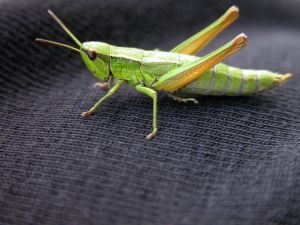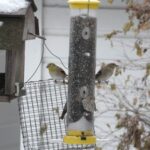Are you searching for facts about grasshoppers? Are you working on a science report about grasshoppers? Are you a home school mom writing a lesson plan about insects? Did your child just see a grasshopper and you’d like to share some random facts about it? Below are a few fun facts about grasshoppers for kids.
Some grasshoppers migrate in groups, like birds do.
Some types of grasshoppers form large groups and move from place to place together. Some of the groups can have one million members or more. They are known as migratory locusts. .When they first meet, they will take short flights together each day. After practicing, they embark on a journey that can last up to three days. They stay together and fly to locations as a group. They will only come down when they are extremely hungry, or it is very cold.
(On a side note, some people believe that locust and grasshoppers are different insects. However, locusts are actually a type of grasshopper.)
Grasshoppers can jump very high.
Some grasshoppers will jump 200 times their length in one jump. That is nearly the equivalent of a child jumping about 180 feet!
You can determine the temperature based on the chirping of grasshoppers.
If you hear a grasshopper chirping, count how many times he chirps in 15 seconds. Add 39 to that number. That is the temperature in Fahrenheit degrees. However, grasshoppers will usually stop chirping when the weather is below 55 degrees or so.
Young grasshoppers can eat twice its own body weight in day.
Young grasshoppers are known as nymphs. Nymphs can eat twice their body weight in a single day. If you weigh 70 pounds, that’s the equivalent of eating 140 lbs of food a day. That is a lot of food!
Grasshoppers are usually active during the day and calm and quiet at night.
Like all insects, grasshoppers must be warm in order for them to be active. When it is cold at night, grasshoppers will lay on plants and be very still. They start waking up and moving around once the sun comes up.
Some grasshoppers destroy crops.
There are many types of grasshoppers that do not cause damage to animals or plant life. However, there are some grasshoppers that can give farmers lots of headaches and stress. Groups of them can destroy acres and acres of crops. Because insecticides (chemicals that kill bugs) have been developed, it is rare for grasshoppers to cause lots of damage today. In the 1800s, migratory locusts caused serious crop damage in the US.
Grasshoppers will consume almost any plant when hungry.
Grasshoppers are very hungry and have been known to eat almost any kind of plant when they need to. However their favorites seem to be grass and the stems of flowering plants.
Most grasshoppers live in grassy areas.
The majority of grasshoppers reside in grasslands. However, they do live throughout the world. Some live in rocky areas. There are even a few that live in deserts in India, Pakistan and other countries.
Grasshoppers have numerous enemies.
Grasshoppers have several natural enemies. They include birds, spiders, mice, lizards, and snakes. Monkeys even hunt grasshoppers. Also, there are many creatures that eat grasshopper eggs includes beetles. Man is the biggest enemy of grasshoppers.
The smallest grasshoppers are called pygmy locusts.
The smallest grasshoppers are about 1.25 centimeters long. They are called pygmy locusts. They will usually live near bodies of water, such as bonds and streams.
Grasshoppers clean themselves frequently.
Grasshoppers (and also crickets) will clean themselves often. They will even pull their antennae through their mouths.
People have eaten grasshoppers for thousands of years.
Some people cook and eat grasshoppers. Some will fry them in butter, boil them, or dehydrate them and eat them dry. Some will even dip them in chocolate.
Grasshoppers are just another little creature that make our world a fascinating place. For more random facts, please read “Facts for Kids About Dragonflies” and “Facts for Kids About Cockroaches.” Happy Learning!
SOURCES:
The Amazing Fact Book of Insects by Casey Horton
Grasshoppers by Jane Dallinger
Insect: Facts and Folklore by L. Patricia Kite
Personal Experience (Regarding the Insecticides)





